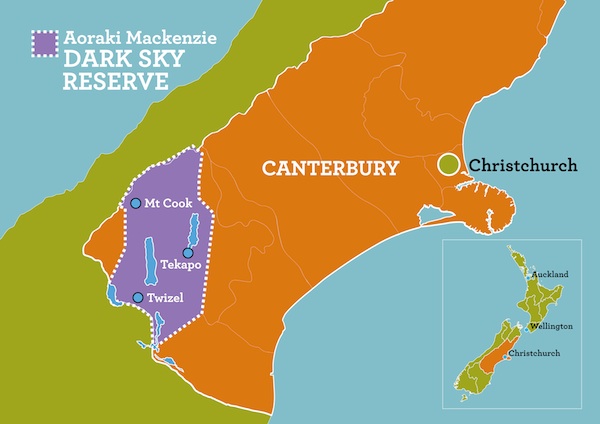New Zealand claims worlds largest Dark Sky Reserve

The Aoraki/Mt. Cook National Park and the Mackenzie Basin, coming in together at 4100 square kilometers, have recently been declared by the International Dark Sky Association as their fourth Dark Sky Reserve. These reserves are areas where the natural night sky is kept clear of artificial light, allowing local wildlife to live a completely natural diurnal cycle, and visitors to see the stars in their full glory as our ancestors did. The Aoraki Mackenzie International Dark Sky Reserve (IDSR) is the largest IDSR in the world, and is the 2nd in the southern hemisphere. It is ranked as a Gold Tier IDSR, meaning that there is practically zero artificial light to be seen anywhere in the reserve.
International Dark Sky Reserves are defined as “a public or private land possessing an exceptional or distinguished quality of starry nights and nocturnal environment that is specifically protected for its scientific, natural, educational, cultural, heritage and/or public enjoyment mission of a large peripheral area. The International Dark Sky Reserve consists of a core area meeting the minimum criteria for sky quality and natural darkness, and a peripheral area that supports dark sky values in the core and receives benefits from them as well. The International Dark Sky Reserve is formed through a partnership of multiple land owners and/or administrators that have recognized the value of the starry night through regulation and/or formal agreement and/or long term planning.”
The other three dark sky reserves are found in Namibia (also a Gold Tier), England and Canada (both ranked Silver).
